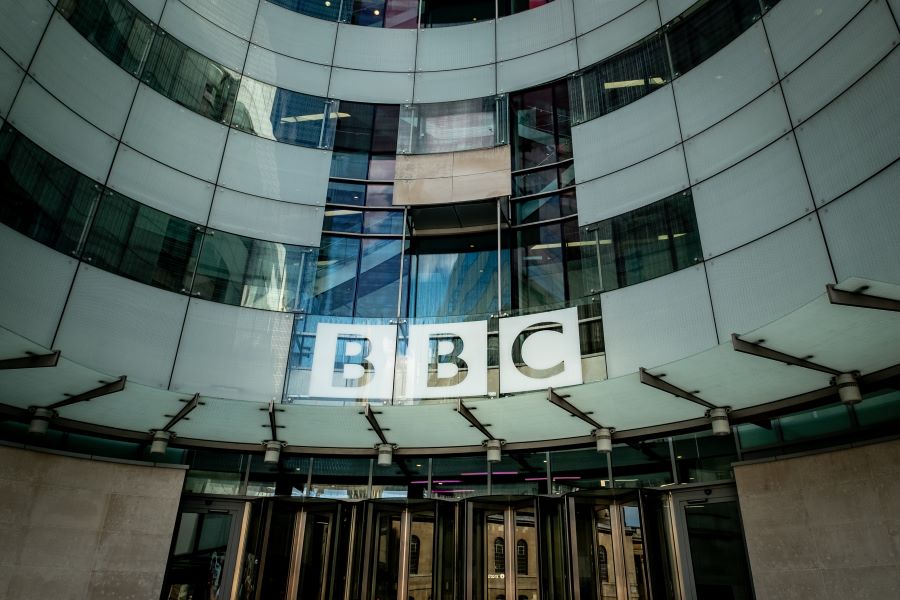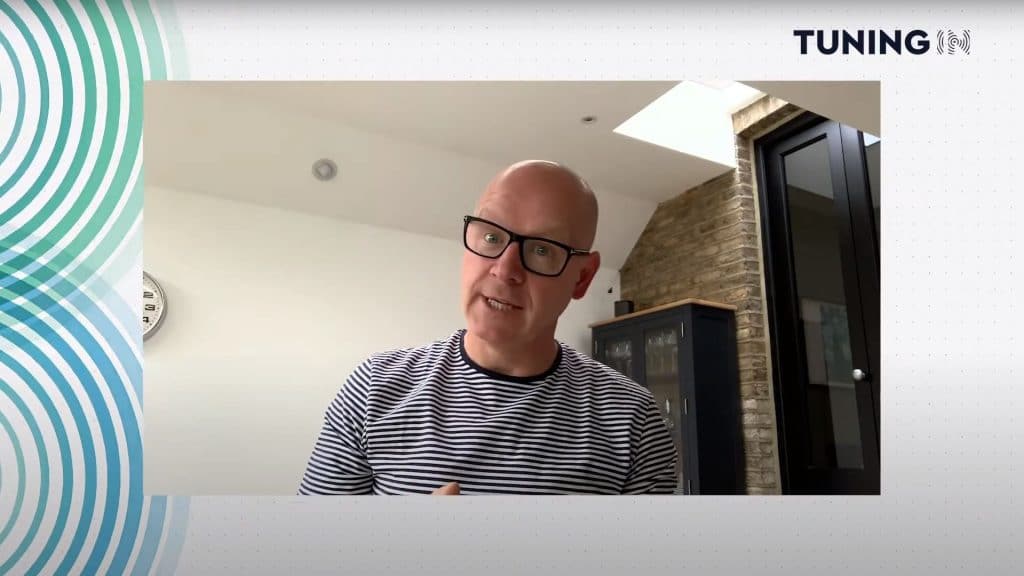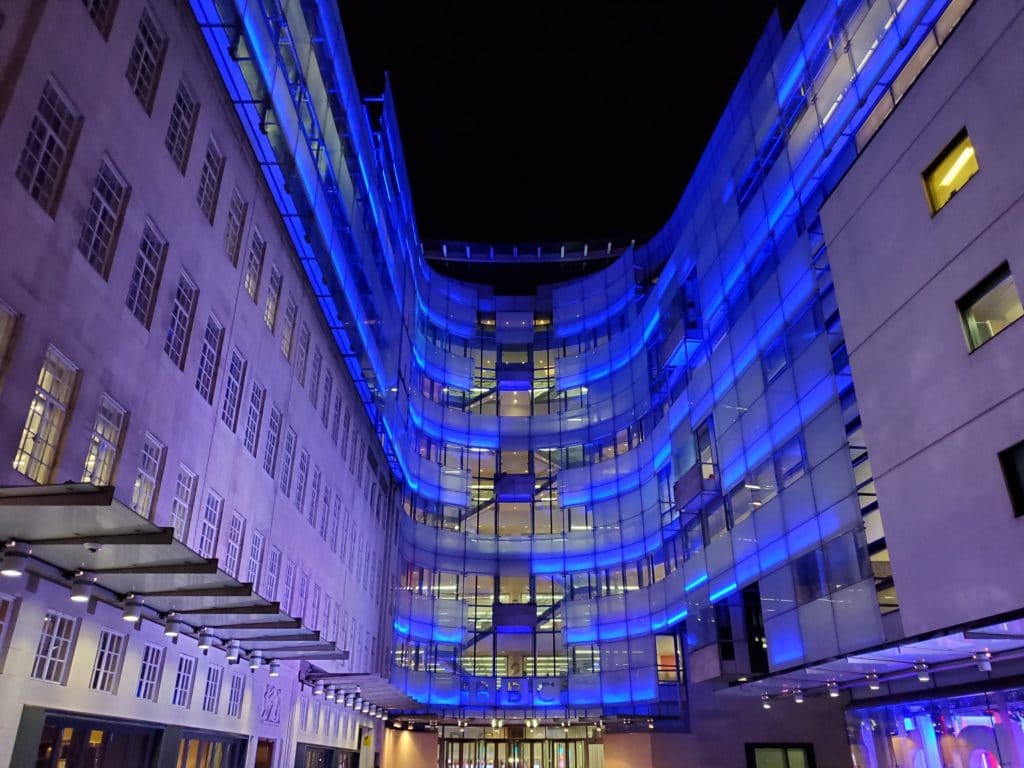
Craig Inglis explores why brands need to advertise post-lockdown at Tuning In Retail

Tuning In Retail, Radiocentre’s specialist livestream event for retailers, focused on the challenges and opportunities for the sector, with a line-up of presentations from the retail and media worlds.
Craig Inglis, Chairman of the Marketing Society, and former Customer Director of John Lewis, spoke about COVID-19’s impact on the retail market and the opportunities that lie ahead. He highlighted that March and April brought the biggest fall in retail sales since records began, along with a huge swing to shopping through digital channels across all retail sectors: “The numbers tell us that these have really been unprecedented times for retail.”
Inglis said that, while there are casualties in the sector “like all crises, there will be others who find opportunities and seize them”. He outlined the importance of a strong customer focus: “Whilst confidence is low consumers still want to buy. They will become more demanding, more discerning, and more considered about what they buy and whom they buy from. They still want to buy, but they want to buy well.”
In terms of opportunities, he described how retail brands can achieve results by engaging on an emotional, as opposed to functional, level: “You shouldn’t think that telling stories this way is self-indulgent. Quite the opposite is true. Investing in brand building during a recession will drive commercial benefit in the short-term and ensure you come out the other side stronger while others struggle.”
Inglis emphasised the good value that advertising represents right now due to low prices and high audience levels, including in radio, before outlining six areas of focus for retailers: “embrace digital”; “reinvention”; “sustainability”; “right sizing”; “collaboration”, and “brand purpose”.
Lucy Barrett, Radiocentre’s Client Director, provided an overview of the medium’s impact and influence, describing the growth of the audio market and live radio’s continued dominant position within this: “What distinguishes radio is the intimate relationship people have with it,” she said, adding that retail brands had one of the highest ROI for radio, with an average of nearly £19 for every pound spent.
Commercial radio has 36 million weekly listeners, listening to an average 13 hours a week, and people spend more time with radio than social media. She also outlined the high levels of trust between radio and audiences and how, during lockdown, 38% of commercial radio listeners increased their listening. Concluding with an upbeat point about an improved mood among the UK population as rules are relaxed, Barrett said that radio could play “an important role in helping people to spend their money”.
In our first #TuningIn Retail session, @LucyBarrett explores how the nation's growing happiness may boost demand for retailers.
Watch now: https://t.co/Yn1oOKKHXz pic.twitter.com/YT7RZRWBNM
— Radiocentre (@Radiocentre) July 14, 2020
Mark Barber, Radiocentre’s Planning Director, focused on how radio advertising can deliver strong results for retailers. Stressing the importance of advertising through recession, due to the potential to boost “excess share of voice”, he described how radio boosts retail campaign cut-through. When used in the media mix by retail advertisers it lifts ad awareness by 38%, relevance by 16%, and consideration by 8%. It also provides “a unique opportunity to speak to shoppers on their way to the store” – live radio reaching 38% of people travelling by car to the supermarket, influencing decision-making as they enter the store and lifting purchase intent. Commercial radio also increases online response rates – delivering a 52% uplift in browsing online for brands running radio ads.
Most crucially, Barber said, radio improves the bottom line – providing a higher profit ROI than any other medium, and paying back £3 profit for every £1 spent by retail advertisers.
“It’s clear that incorporating radio into the mix can make a big difference in helping to get the tills ringing again.”
How can radio help retailers?@mark_barber explains how radio can grow brands market share quicker than other media #TuningIn pic.twitter.com/rbu4VePicd
— Radiocentre (@Radiocentre) July 14, 2020
Siobhan Kenny, Radiocentre’s CEO, then focused on the recent Commercial Radio: A force for good report, which found that commercial radio has increased its news output since lockdown began, broadcasting on average 25% more news bulletins that last 28% longer. It also shows that people have listened to commercial radio for nearly two hours extra each day since early March and demonstrates that radio is the most trusted medium for news (77%), closely followed by TV, with just 15% trusting social media as a news source. “There’s a lesson for government in that radio and TV are the most heavily regulated,” said Kenny.
She also emphasised that radio has both mass reach while being able to connect with diverse audiences – having strong BAME and C2DE listenership, for instance. After highlighting commercial radio’s charitable and community support work, Kenny described the values listeners ascribe to the listening experience: they say it helps them to “keep in touch” and be “informed”; while providing “company, happiness and trusted news.”
“That explains why it’s such a good environment for brands to be in and, of course, your ads are unblockable and unskippable,” Kenny concluded.
Our CEO @knockalaughta explores some of the reasons why audiences are choosing commercial radio and why it's a good environment for brands #TuningIn pic.twitter.com/s6xunAo15J
— Radiocentre (@Radiocentre) July 14, 2020
Jo McCrostie, Creative Director at Global, talked about the speed and flexibility of radio and striking the right tone with advertising in tough times, demonstrating how retailers can make effective use of brand music, voice, casting and direction to reassure people and build human connections with customers.
Creative Director of @global, @jomccrostie, looks at how retail brands can use radio to capitalise on changing purchasing habits post-lockdown #TuningIn pic.twitter.com/18kKynqWmn
— Radiocentre (@Radiocentre) July 14, 2020
Judith Spilsbury, Radiocentre’s Head of Training & Special Projects, described the potential to optimise radio campaigns by targeting relevant moments when listeners are engaged in other tasks (such as cooking, driving, exercise, shopping or housework). Explored in greater detail in Radiocentre’s Hear and Now study, Spilsbury said that radio advertising that relates to a specific activity boosts engagement by 23% and memory encoding by 22%. Ads tailored creatively to such a moment deliver the largest effects –increasing engagement threefold, and doubling memorability.
Using the example of a Currys Apple Watch ad, which included specific mentions of exercise, Spilsbury said: “It’s clear from the study that speaking to people in relevant moments can make a big difference in boosting relevance and memorability.”
Radiocentre's @JudithSpilsbury explores how targeting people at relevant times helps turbocharge ad effectiveness #TuningIn pic.twitter.com/0xNTBuv8io
— Radiocentre (@Radiocentre) July 14, 2020
Fleur East, the Hits Radio Breakfast Presenter and music artist, spoke with Paul Gerrard, the Hits Radio Programming Director, about the challenges of broadcasting a live show in pyjamas during lockdown, lifting audience spirits, tackling big issues, and how branded content is reaching the breakfast audience in a real-time, live environment.
The Tuning in Retail stream ended with Kamilah Kamara, Radiocentre’s Insight Manager, who described how the retail sector could make the most effective use of audio brand assets. She showcased how brands such as Marks & Spencer and Moonpig have used consistent and distinctive creative ideas, sonic triggers and music.
Next week: Tuning In Travel, Tuesday 21st July, 9.30 am.



